Earnings: BBVA posts profit of €3.48 billion in 2016 (+31.5 percent)
- Income: Net interest income increased 3.9% in 2016 (+14.9% stripping out the impact of currencies). The fourth quarter was the year’s highest (€4.39 billion). Cost-containment efforts improved the efficiency ratio (51.9% in 2016)
- Risks: BBVA Group’s NPL ratio improved to 4.9% in December (from 5.4% at the end of 2015), with coverage ratio of 70%
- Capital: BBVA reached a fully-loaded CET1 ratio of 10.90%, after generating 58 basis points in the year. The Group maintains its 11% target for 2017
- Transformation: At the end of December 2016, BBVA’s digital customer base stood at 18.4 million (+20% y-o-y). Mobile customers grew 38% to 12.4 million
- Dividend: BBVA plans to implement the shareholder remuneration policy announced in 2013, which aims to distribute between 35% and 40% of profits to dividend payouts, with a 100% cash dividend

The BBVA Group earned €3.48 billion in 2016, up 31.5% from the previous year and its highest figure since 2010. Solid performance of recurring revenues, moderation in operating expenses, and a drop in impairment losses on financial assets are the key drivers of this growth.
“In 2016, our profit has grown strongly thanks to the Group’s geographic diversification and business model,” said BBVA Executive Chairman Francisco González. “In addition to managing the short term, we have made remarkable progress in our transformation journey, which benefits mainly the customer,” he added.
In accordance with its shareholder remuneration policy announced in October 2013, BBVA intends to distribute between 35% and 40% of profits to dividend payouts, with a 100% cash dividend policy. The Group is also proposing a final Dividend Option scheme that would be paid in April 2017 in the amount of €0.13 per share approximately, provided that it is approved by the Annual General Meeting and the Board. Going forward, there would be two dividend payouts per year, tentatively in October and April of the following year.
Francisco González: “BBVA aims to be one of the digital leaders in the new league of competitors that is now forming”
As for results, it should be noted that the y-o-y changes noted below include several impacts: the depreciation of exchange rates, the change in the scope of consolidation due to the incorporation of Catalunya Banc on April 24, 2015, and the acquisition of an additional 14.89% stake in Turkish bank Garanti, which has been incorporated into the Group’s financial statements using the full consolidation method since Q3-15.
The net attributable profit in 2016 includes a negative impact of €404 million (after tax) related to a gross provision of €577 million, booked in Q4-16, to cover possible future claims as a result of the resolution of Court of Justice of the European Union (CJEU) on mortgage floor clauses in loans to customers in Spain.
Net interest income (NII) rose to €17.06 billion in 2016, up 3.9% compared to the previous year, (+14.9% at constant exchange rates). This positive behavior was the result of, essentially, activity growth in emerging markets and the resilience of customer spreads in developed markets, with interest rates that remain at all-time lows. The NII in Q4-16 was the highest of the year: €4.39 billion. On the other hand, commissions and fees, which were dragged down due to lower activity in markets and investment banking, remained at levels similar to those of 2015 (+0.3% y-o-y, +8.5% excluding currency impacts).
Gross income stood at €24.65 billion, up 4.1% y-o-y (+14.2% at constant exchange rates). The strength of recurring revenues, in combination with NTI’s positive contribution, drove growth under this heading.
For yet another quarter, the impact of cost containment efforts was evident. This helped operating expenses to grow (+3.9% y-o-y, +11.9% at constant exchange rates) below the rate of increase in gross income for the year as a whole. All this, despite the fact that Catalunya Banc’s expenses were included from the beginning of 2016, while in 2015 they started being taken into account since April 24. The Group also registered Garanti’s operating expenses using the method of full integration from Q3-15, but in 2016 that item was included from January. Other noteworthy impacts were high inflation rates in certain geographies and the negative impact of the exchange rate depreciations on cost headings denominated in currencies other than the euro.
A positive evolution of operating expenses allowed the efficiency ratio to close at 51.9% in 2016, down 51 basis points from 52.4% a year ago (at constant exchange rates and with Turkey in comparable terms).
In this context, operating income for 2016 came to €11.86 billion (+4.4% y-o-y, +16.9% at constant exchange rates).
Risk indicators continued to improve progressively throughout the year. The NPL ratio closed in December at 4.9%, below September levels (5.1%) and 48 basis points below the December 2015 figure. On the other hand, the coverage ratio fell slightly from September to 70%. Also, the cumulative cost of risk decreased to 0.84% (vs. 0.92% in the first 9 months of 2016 and 1.06% in 2015).
In terms of capital adequacy, capital ratios showed strength. The fully loaded CET1 capital ratio came at 10.90%, up 58 basis points from December 2015 levels. In the last quarter of the year, the ratio slipped slightly, affected by high market volatility, among other impacts. In this context, BBVA confirms its target of reaching an 11% CET in 2017. Also, the bank maintained its high capital quality, reaching a fully-loaded leverage ratio of 6.5% at the end of December, which compares very favorably with the average of its European peers.
Regarding bank’s activity, year-end figures in both gross lending (€430.47 billion) and customer deposits (€401.47 billion) remained at very similar levels compared to the previous year.
-
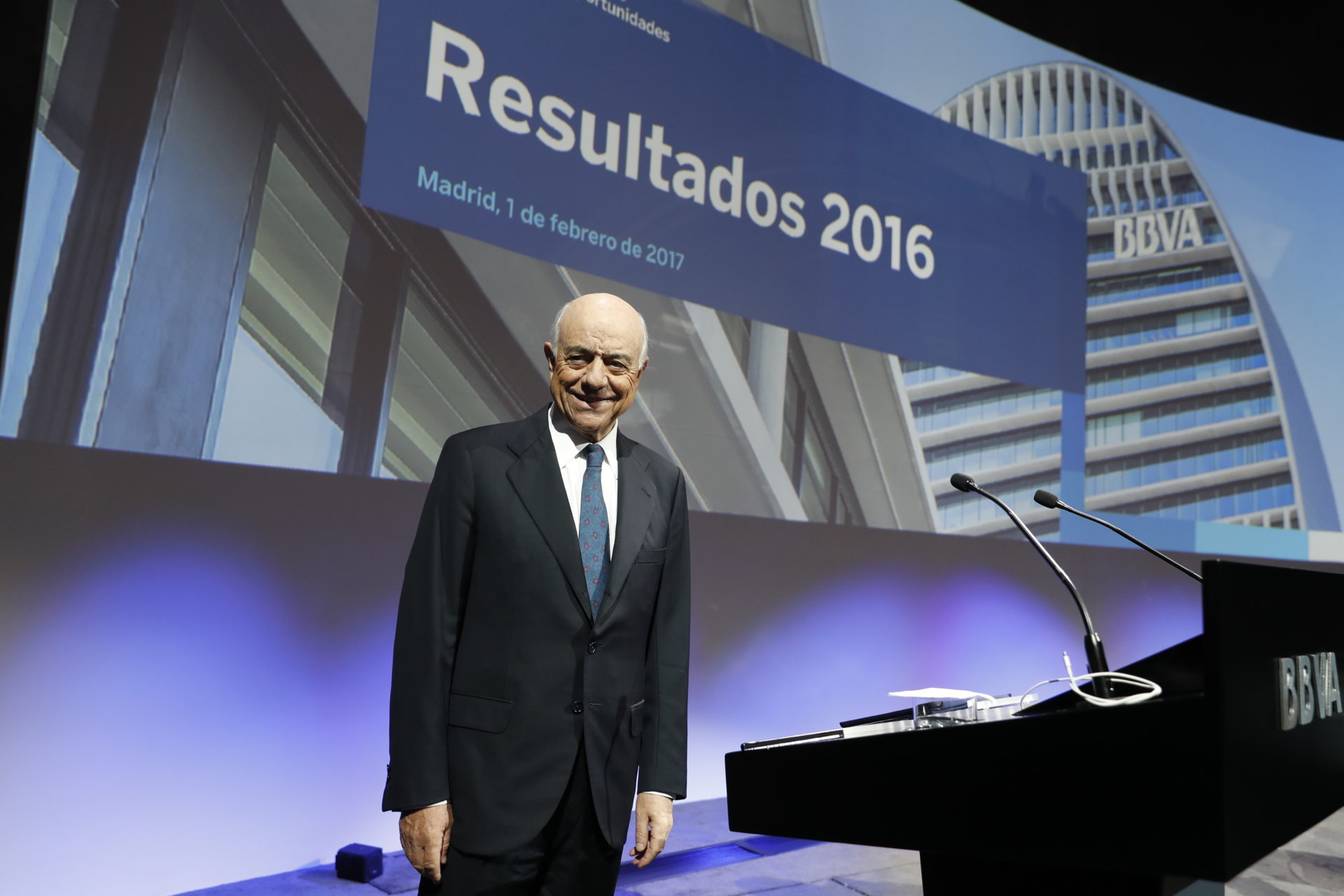 1
1BBVA earns €3.48 billion in 2016 (+31.5%)
Income: Net interest income increased 3.9% in 2016 (+14.9% stripping out the impact of currencies). The fourth quarter was the year’s highest (€4.39 billion). Cost-containment efforts improved the efficiency ratio (51.9% in 2016)
-
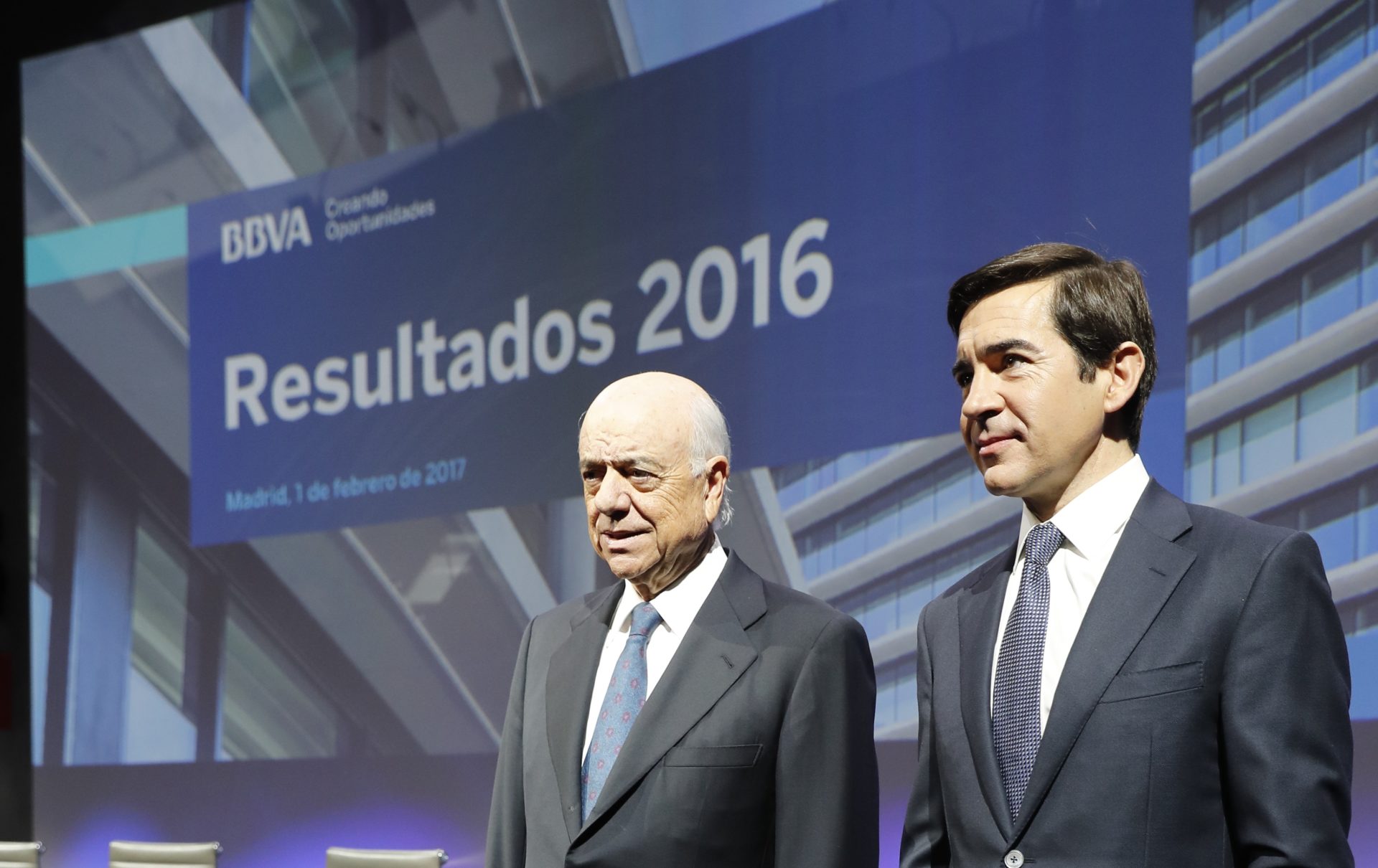 2
2BBVA earns €3.48 billion in 2016 (+31.5%)
Risks: BBVA Group’s NPL ratio improved to 4.9% in December (from 5.4% at the end of 2015), with coverage ratio of 70%
-
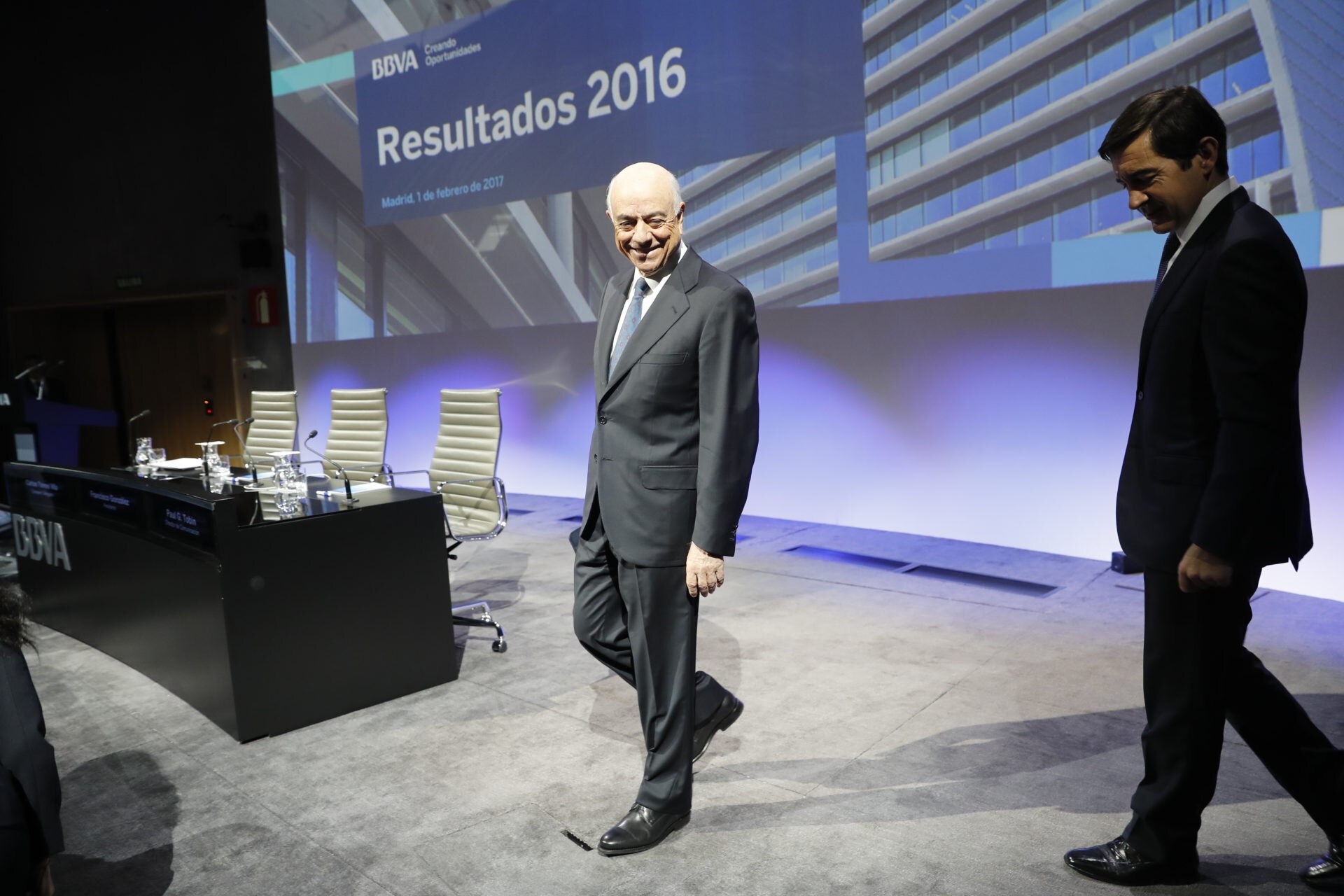 3
3BBVA earns €3.48 billion in 2016 (+31.5%)
Capital: BBVA reached a fully-loaded CET1 ratio of 10.90%, after generating 58 basis points in the year. The Group maintains its 11% target for 2017
-
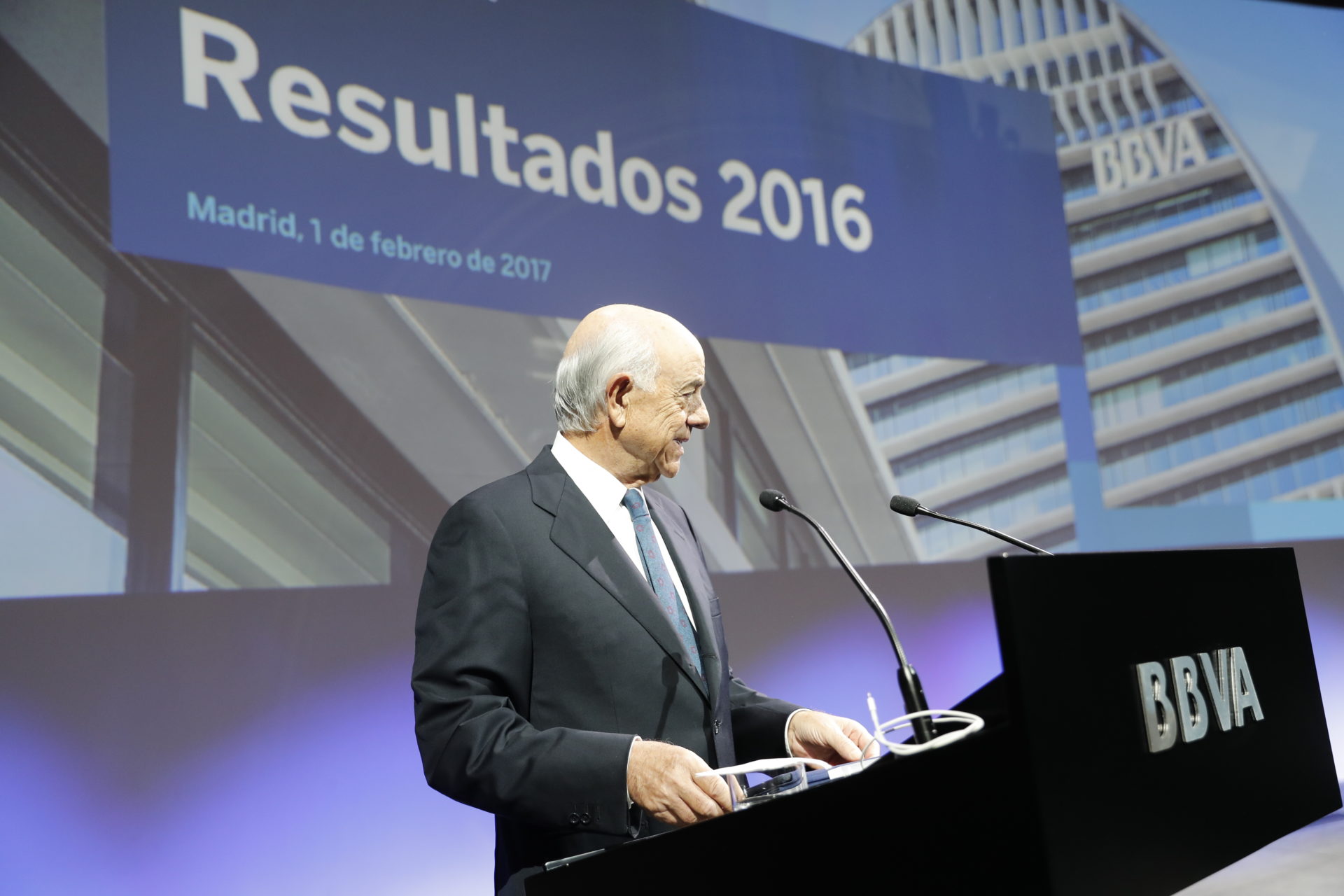 4
4BBVA earns €3.48 billion in 2016 (+31.5%)
Transformation: At the end of December 2016, BBVA’s digital customer base stood at 18.4 million (+20% y-o-y). Mobile customers grew 38% to 12.4 million
-
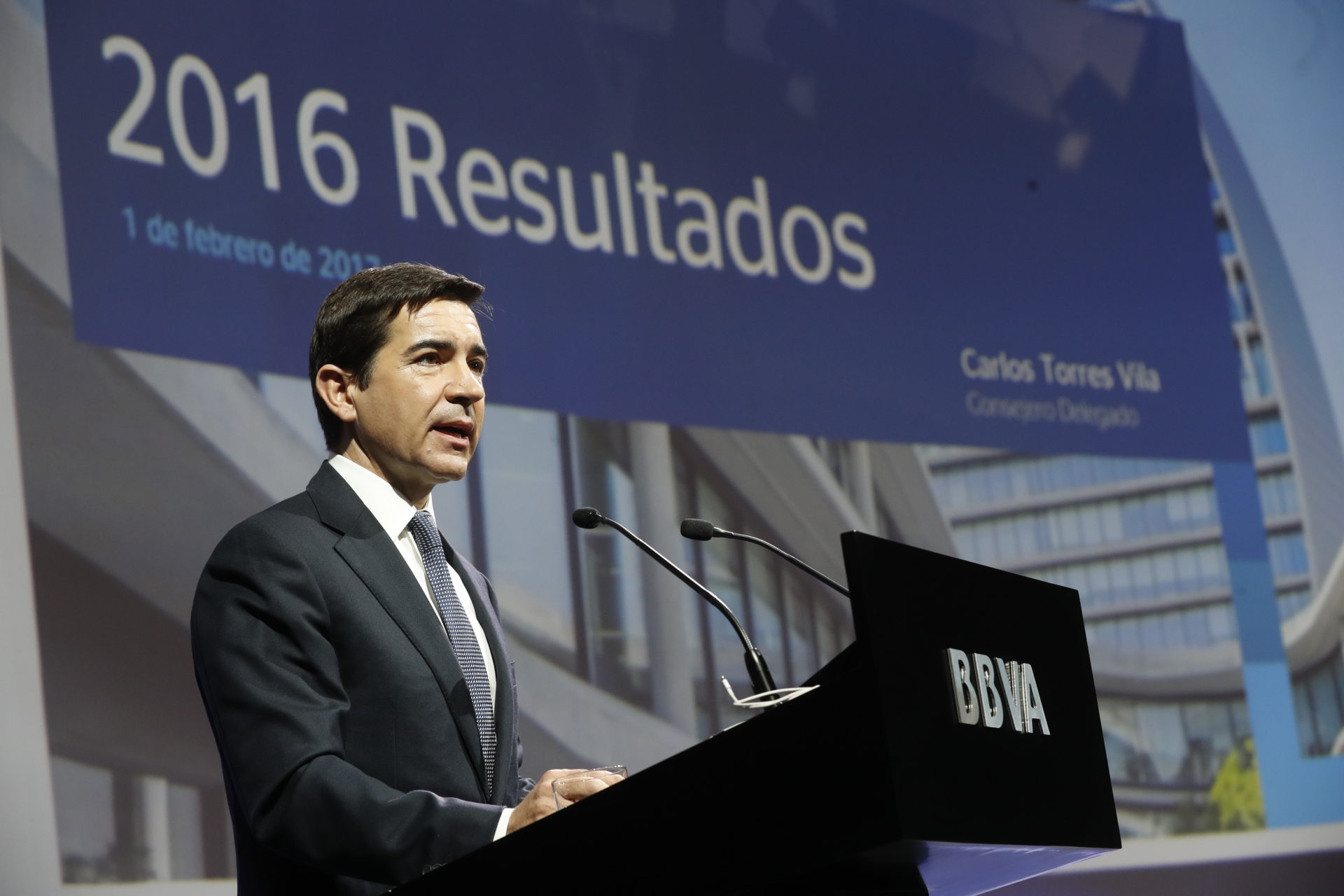 5
5BBVA earns €3.48 billion in 2016 (+31.5%)
Dividend: BBVA plans to implement the shareholder remuneration policy announced in 2013, which aims to distribute between 35% and 40% of profits to dividend payouts, with a 100% cash dividend
These accounts can also be analyzed with a comparable scope of consolidation in Turkey. BBVA increased its stake in Garanti in July 2015, an operation that has an impact in y-o-y comparisons. Taking into account Garanti’s stake in homogeneous terms, i.e. as if it had been incorporated since January 1, 2015, the y-o-y rates of change would have been the following: NII fell 3.6% y-o-y in 2016 (+7.0% stripping out currency impact), while the gross income fell 2.2% (+7.7% at constant exchange rates). On the other hand, operating income slid 3.1% (+8.9% excluding currency impact).
Tranformation of the bank
As of December 2016, 18.4 million customers interact with the bank via digital channels (+20% compared to a year earlier). Of these, 12.4 million are mobile customers, up 38% y-o-y.
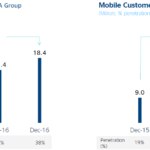
“We have redefined our value proposition this year in order to help people make the best decisions in their lives and in their businesses,” said BBVA CEO Carlos Torres Vila. “As our new tagline states, we want to create opportunities for our clients.”
One of the bank’s goals is to boost digital sales across all franchises. Spain and the United States are two regions where the trend was more evident in 2016. In Spain, the percentage of transactions conducted through digital channels was 17.1% in 2016, compared to 8.4% in 2015. In the U.S., the percentage grew from 9.3% last year to 19.9% in 2016. Digital sales also gained momentum across the rest of regions. In 2016, digital accounted for 15.2% of total sales in South America, 11.9% in Mexico and 26.1% in Turkey, the country with the highest figure.
The main highlights of each business area are detailed below.
Once again, banking activity in Spain showed great resilience in a complex environment with interest rates at all-time lows. Net interest income fell 2.9% in 2016, partly as a result of lower activity in mortgages and with public institutions. Synergies from Catalunya Banc’s integration started to show in Q4-16. These synergies will be more visible in 2017. On the other hand, the drop in impairment losses on financial assets –down 42.7% compared to 2015– also contributed to the results. The NPL ratio continued improving to 5.8% (vs. 5.9% in September), with a 53% coverage. The net attributable profit in 2016 stood at €912 million, down 16% y-o-y. This figure is impacted by the provision related to floor clauses. Excluding this impact (€404 million, after tax), the attributable profit grew 21.2% in y-o-y terms.
Regarding the balance sheet, new loan production reflected the increasing trend observed throughout the year. New mortgages grew 5.5% in y-o-y terms, while new consumer loans grew 36.2%.
Spain reduced its net exposure to real-estate business by 16.8% during the year, to €10.31 billion at the end of December. This business area presented a cumulative result in 2016 of €-595 million, compared to €-496 million in the previous year.
BBVA’s result in Spain in 2016 -combining banking and real estate activities – reached €316 million (-46.3% y-o-y). Excluding the impact of the floor clause provision, the attributable profit would have increased 22.2%.
To better explain the business trends in the areas that use a currency other than the euro, the variation rates described below refer to constant exchange rates.
United States saw a good performance of recurring revenues. The cumulative net interest income grew 7.6%, partly driven by the interest rate hike by the Federal Reserve in December. Despite a fall in Q4-16, commissions and fees continued to evolve positively and grew 3.2% for the year as a whole. Gross income growth (+2.5% in 2016) was hindered by the drop in NTI, which was also dragged down by market conditions. However, cost containment efforts (up 1.7% in 2016) drove operating income to a 4.3% growth y-o-y. Impairment losses on financial assets continued decreasing in Q4-16, although in cumulative terms they increased 55.8%, mainly as a result of higher provisions in the energy sector during Q1-16. In the following quarters, these provisions declined gradually. Leading loan-quality indicators improved in the last quarter. The NPL ratio ended at 1.5% (vs. 1.7% in September), with a coverage of 94% (vs. 87% in September). The U.S. business area earned €459 million in 2016, down 11.5% y-o-y.
Turkey’s results in homogeneous terms (i.e. including the stake as if it had been incorporated by the full integration method since January 1, 2015) reflect the notable strength of recurring revenues. In 2016, net interest income grew 10.6% y-o-y thanks to higher lending volume and good price management. Fees and commissions, on the other hand, grew 7.8%. Both headings favored gross income (+21.2% y-o-y). All of the above, together with moderate growth in expenses, helped operating income to grow by 32.6%. Asset quality showed a positive behavior in a complex environment. The NPL ratio dropped to 2.7% in December (vs. 2.9% in September) and stood below the sector’s average. Turkey’s net attributable profit jumped 40.5% y-o-y to €599 million.
In Mexico, the activity continued to improve and contributed, once again, to consolidate BBVA Bancomer in its leadership position, with a market share for its current portfolio of 23.5%. Solid banking business performance drove the net interest income and commissions and fees headings to grow 11.6% and 10.2%, respectively, in 2016. All this, in combination with a solid net trading income evolution (especially in Q4-16), helped gross income to grow 12.1%, to €6.77 billion. Another key issue was the cost containment effort, which, in the year as a whole, grew at a slower rate than revenues. As a result, operating income grew 15% in 2016. In terms of asset quality, the trend is still of stability in the main risk indicators, in line with expectations. In this regard, NPL and coverage ratios ended December at 2.3% and 127%, respectively. BBVA’s net attributable profit in Mexico in 2016 came to €1.98 billion, growing again at double digit rates (+11.0% y-o-y).
In South America, activity growth continued both in terms of investment and resources, though at a softer pace following the macroeconomic slowdown in the region. Growth propelled a solid evolution of recurring revenues. Net interest income grew 11.4% y-o-y, while commissions and fees rose 8.2%. All this, together with a good behavior of NTI helped gross income to increase 10.3% in 2016. High inflation rates in some countries and exchange rate trends impacted the expense line, which grew 17.5% in 2016. However, operating income increased 4.7%. Regarding asset quality, the main credit risk metrics deteriorated slightly, as expected, driven by the macroeconomic environment. The NPL ratio stood at 2.9% (from 2.8% in September). In 2016, net attributable profit jumped 1.1% to €771 million.
About BBVA
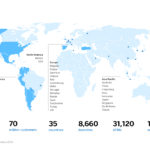
BBVA is a customer-centric global financial services group founded in 1857. The Group is the largest financial institution in Spain and Mexico and it has leading franchises in South America and the Sunbelt Region of the United States; and it is also the leading shareholder in Garanti, Turkey’s biggest bank for market capitalization. Its diversified business is focused on high-growth markets and it relies on technology as a key sustainable competitive advantage. Corporate responsibility is at the core of its business model. BBVA fosters financial education and inclusion, and supports scientific research and culture. It operates with the highest integrity, a long-term vision and applies the best practices.